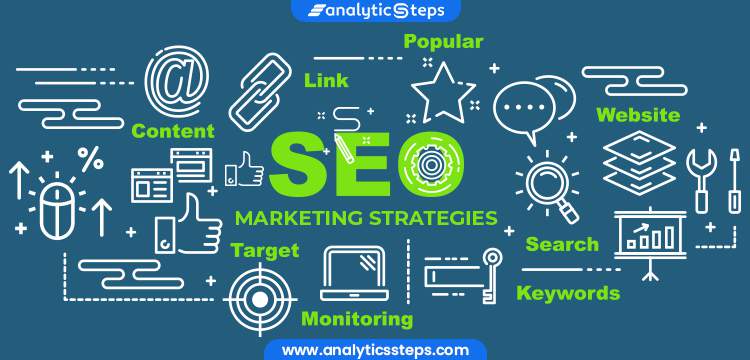
Addressing the content is the first step to implement on-page SEO. Content is the heart of your site. It should address search intent. Include related keywords and semantics in the text. Also, include links within the text. It is important that your meta description is optimized as it will be included in search engine result pages. It is important that the meta description accurately describes the expectations of the user when they read the content. This step should be done with every piece of content, regardless of type, format, or platform.
Your site's bread and butter is content
There is so much content out there, but what makes it valuable? Blog posts are not enough. It should add value to your business, and generate leads. For the internet to thrive, it must have bread and butter content. Before creating your content strategy, you need to have a few key pieces of content in place. These are the pieces you can build on. These are some great ideas for content.
First, understand what content is. Content is what drives visitors to your website. It makes it appear authoritative and trustworthy. This is possible by using the right keywords, answering key questions and focusing on the right categories. This is the secret! This is a crucial first step in optimizing SEO. But be careful not to overdo it. A content plan should include key keywords that will drive traffic to your site.
It should address search intent relevant to the topic

Keywords are crucial, but using them too often can cause your rankings to drop. You can get the most from your SEO efforts by using your keywords naturally in your text. Remember that your audience is humans and not robots. Your goal should be for your content to be interesting and helpful to them. You should also address their search intent. These are some steps to help you get started. Continue reading to find out how keywords can be used to enhance your SEO.
It should include semantic and related keywords
Targeted traffic can be attracted to your site by using long-tail keywords. Long-tail keywords have specific search intent and offer a reasonable chance of ranking on page one of Google's search results. Semantically similar keywords are closely related with your target keywords. They help Google to make connections and determine relevance. These keywords should be incorporated into your body text in an organic way. The searcher is more likely than any other to click your ad when it is related to a service or product.
The first thing you must do when optimizing your website for search engines is to use appropriate, search-engine-friendly URLs. These URLs should be short and contain the keywords in an accurate manner. The first header of every post should contain your keyword, which is often the title. The keyword should be included in subheadings if necessary. Use H2 headers and H3 headers only if they make sense.
It should include links within the organization
Internal linking, which is a key aspect of on page SEO, is vital. Internal links are used to group pages that are related, in the same way as companies group their departments. These links improve relevance, context, coverage, and depth. Search engines can use internal linking to determine which pages are the most important for visitors. When internal links are dense, search engines consider the page to be more important. Links between internal pages help to increase dwell time, which is crucial for SEO. Sitemaps should contain all pages within a website.

Internal links not only help prospects find content, but they also boost search rankings. Search engine crawlers as well as users are very conscious of the importance of internal links. Google won't be able to find your website if you don't have any internal links. Prospects won't be able to find your services and products without internal links. This can hinder your efforts to rise in the SERPs. Include internal links in your SEO checklist. You can find out more information about the importance of linking to internal pages on your site by reading this article.
FAQ
What do I need to know about backlinks?
Backlinks are links pointing to a webpage from another website. They are one of search engines' most powerful tools to help determine the place a web page is in search results. They are particularly helpful as they demonstrate that someone else believes that your content has value. A lot of quality backlinks is necessary if you want your content to rank high in search engine results.
What is an SEO marketing campaign?
The content of a website is an important part. Without relevant and useful information, your site will not rank well enough in search engines.
An SEO campaign optimizes your site by getting links from other websites back to yours. It includes social media optimization. This involves using Twitter and Facebook to increase brand awareness and drive more traffic.
These will increase your website's visibility and help you rank higher in search engines. SEO campaigns focus on building quality backlinks to your site in order for Google to recognize your website's value.
How often should my website be updated?
Updating your site regularly can improve its rankings. It's not necessary. It's not necessary to constantly update content that you already have created.
Statistics
- These guides are designed and coded 100% from scratch using WordPress. (backlinko.com)
- Sean isn't alone… Blogger James Pearson recently axed hundreds of blog posts from his site… and his organic traffic increased by 30%: (backlinko.com)
- If two people in 10 clicks go to your site as a result, that is a 20% CTR. (semrush.com)
- A 62.60% organic traffic boost to that page: (backlinko.com)
- Deleting those 10k pages is one of the main reasons that he improved his site's organic traffic by nearly 90%: (backlinko.com)
External Links
How To
How do you create your first blog site?
It's simple! WordPress is an excellent platform for creating a blog. It is easy to customize the appearance of a blog's appearance by changing the fonts and colors or customizing its layout. Users can also install plugins to modify certain elements of their websites based on visitor activity.
There are many free templates you can download from WordPress.org. You also have the option to purchase premium templates. Premium templates have additional features, such as more pages, extra plugins and enhanced security.
After you have downloaded the template, you will need to sign up to a free hosting account to upload your files to your blog and manage it. There are many hosts that offer free accounts. However, there may be restrictions on how much storage you can use, the number of domains you can host, or how many emails can you send.
If you wish to use more than one domain, you will need to purchase additional email addresses. For this service, some hosts charge a monthly cost.
You may be wondering why anyone would pay for a blog to be hosted online if you are new to blogging. Hosts offer unlimited storage space. This means that files can be saved indefinitely and won't be lost if they're accidentally deleted.
Many hosts permit multiple domain hosting. You can host several sites under one package. You can avoid signing up for multiple email accounts and maintain all your sites through one interface.
Some hosts provide social media sharing buttons to their dashboards. This allows visitors and users to quickly share posts across the Internet.
Hosting providers usually offer tools to manage your blog. You can view the performance stats of your website, see how many people visited each post, and compare your traffic with other blogs.
These tools can make managing your website easier and quicker, so it's worth taking a look at them before you commit to a hosting plan.
To sum up:
-
Choose a topic relevant to your business;
-
Create engaging content;
-
Optimize your site using SEO techniques;
-
Promote your site using social media channels;
-
To make necessary changes, keep an eye on your statistics.
-
Keep your blog updated regularly, last but not least.
You should create high-quality content, market it effectively, and monitor its success.